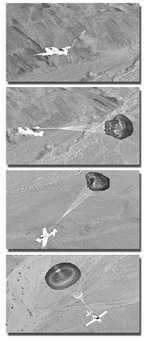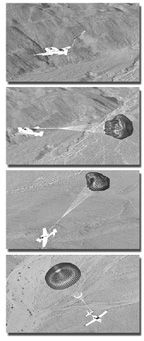
Cirrus and Unintended Consequences
In this months issue is something entirely new: the first Used Aircraft Guide on Cirrus airplanes. Although it seems like only yesterday, the Cirrus SR20 has been on the market for six years and owners have been turning them over in the used market for quite some time. As we report, used SR20s generally appear to be good buys; for under $200,000-well under, perhaps-you can have a nearly new, well-equipped airframe. A recent issue of Trade-A-Plane had about 15 Cirrus aircraft listed, including a 2000 model SR20 with 670 hours for $180,000. Just for comparison, the same sum buys a late 1980s Mooney 252, an early 1980s F33A Bonanza or a 1999 Cessna 182.
Unique to the Cirrus, of course, is the CAPS or Cirrus Airframe Parachute system, an innovation that continues to generate controversy in the GA industry. No other major airframe manufacturer has signed on to install the BRS, leading many to ask whether the parachute is a good thing after all. My own view is that the parachute is a positive safety development, even though its long-term record has yet to be established and at least a couple of the successful deployments have been under questionable circumstances where the handle appears to have been pulled as a first resort rather than the last. Thats another way of saying better training on CAPS deployment is needed. Training aside, much of the cynicism directed at the Cirrus parachute is mindless knee-jerk frothing from the club mentality that permeates general aviation. Then again, some of it is more considered.
At AOPA Expo last fall, I was chatting with a lawyer friend when the conversation drifted to the subject of Cirrus and its parachute. When I allowed as how Id gotten over my reactionary view of parachutes for airplanes, he observed that such naivet was hardly becoming in a guy my age and that the Cirrus parachute could very likely kill general aviation as we know it. Huh? Surely, youre kidding, I replied. No, he said, Im dead serious.
Heres the scenario of the damned: a rich software entrepreneur bores a smoking hole with his Bonanza and the widow, aided by a feckless lawyer, sues Raytheon for its negligence in not providing a parachute for the airplane. The plaintiff wins, thereafter grounding every Bonanza ever made. Whats ludicrous about this notion is not that its far-fetched but that we have a legal system that could actually make it happen. Depressing as that sounds, I still believe the parachute was and is a righteous idea. Sometimes, even when the outcome is in doubt, the nobility of principle is the right choice over the harshness of pragmatism.
———-
Two Businesses
While we were flying around flight testing the SureCheck Micro reviewed in this issue, we stopped by Eastern Avionics in Punta Gorda, Florida, which graciously loaned us a ProxAlert R5 for comparison. As we reported in the November issue, Punta Gorda was devastated by Hurricane Charley in August and, as elsewhere in Florida, the devastation was capricious.
Easterns sales office and hangar took significant damage but remained standing and was back in limited business within days. A short walk down the ramp, however, the ModWorks hangar was flattened and, sadly, the business went with it. This is a setback for both the airport and the Mooney community, for ModWorks was a well-regarded, innovative shop of the sort the industry desperately needs. We can only hope it reemerges in the future but as of late fall, the prospects look dim.
-Paul Bertorelli


